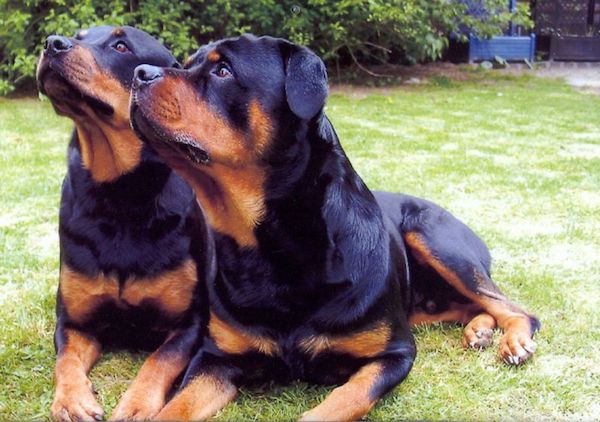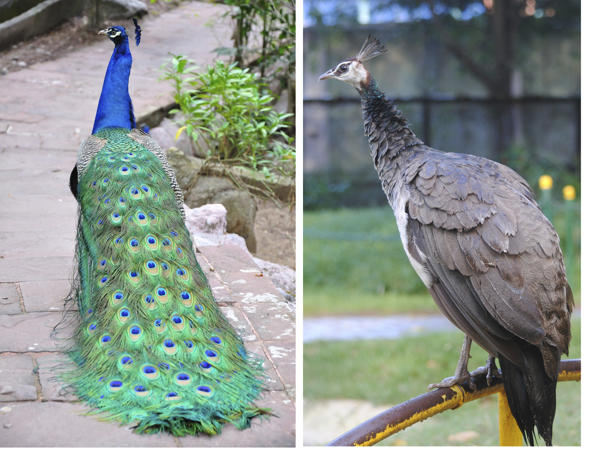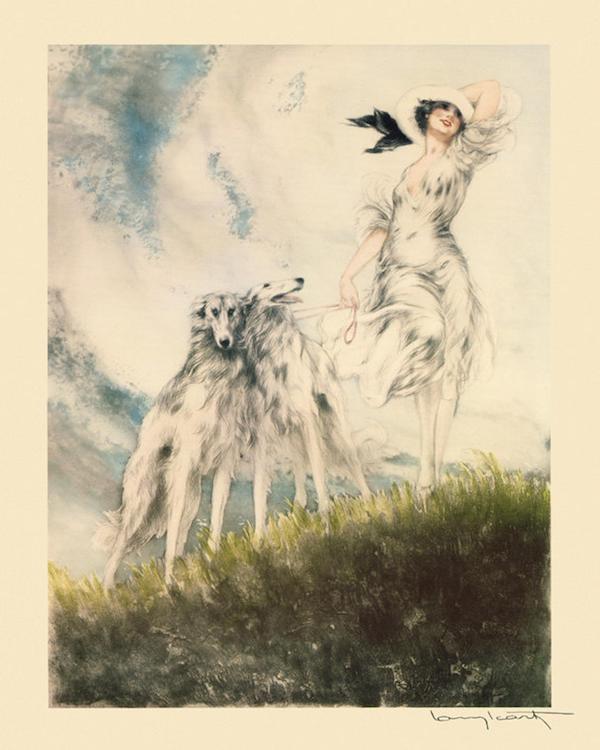
Boys and girls, males and females, dogs and bitches. In the dog world, there are often phenotypical differences between the two that go beyond size, and that’s called “sexual dimorphism.” The simplistic way to define this is that boys should look like boys, and girls should look like girls.
It’s not just in dogs. Sexual dimorphism is very apparent in many birds. Just look at difference between a male peacock and female peacock:

Image found on Pinterest and happily credited upon receipt of information
The contrasts in gender, however, aren’t as dramatic in dogs, but some breed standards do make a specific point of indicating what the differences between genders should look like. The wording can be as general as in the Chow Chow standard: “There is an impression of femininity in bitches as compared to an impression of masculinity in dogs,” or in the Russell Terrier’s: “Males should look masculine while females should look feminine.
Wording may also be as nitty-gritty-detailed as Hamiltonstövare’s: “Males have more pronounced lips than females.”
Some of the differences have to do with coat. Finnish Spitz males carry more of it than females, and in a Keeshond and Norwegian Lundehund, the ruff is more profuse.
Sometimes, the contrast is in structure: Shiba Inu males and females are distinctly different in appearance: males are masculine without coarseness, females are feminine without weakness of structure.
In Saint Bernards, “Female animals are of finer and more delicate build.”
Schipperke males are decidedly masculine without coarseness, while bitches are decidedly feminine without over-refinement, a statement that also appears in the standard of the English Setter, and is close to the language in the Irish Setter standard (“structure in the male reflects masculinity without coarseness. Bitches appear feminine without being slight of bone”).
We have a weakness for standards that add a bit more flourish to how they word things: Belgian Malinois and Belgian Sheepdog males are usually somewhat more impressive and grand than their female counterparts which have distinctly feminine looks.
Perhaps our favorite passage regarding sexual dimorphism comes from the Borzoi breed standard: “The Borzoi should always possess unmistakable elegance, with flowing lines, graceful in motion or repose. Males, masculine without coarseness; bitches, feminine and refined.” The wording conjures up an original Louis Icart from the Art Deco period:

Several standards allow a bitch to be a bit longer through the loin to give room to carry puppies, and as an aside, we’re still looking for an authoritative source that can offer proof that bitches need a longer loin for pregnancy, but we digress.
In reading about sexual dimorphism, one is bound to come across ”Rensch’s Rule,” named after Bernard Rensch. The evolutionary biologist said in 1950 that when a male is larger within a dog breed, the female is respectively smaller, and that the difference is more prevalent in the larger breeds, while in the smaller breeds, there appears to be less variability. Put another way, differences between gender increases with increasing body size when the male is the larger sex, and decreases with increasing average body size when the female is the larger sex. Despite numerous studies, as of 2007, scientists still didn’t have a general explanation for this method of describing morphological evolution, aka allometry. You can read more about this here. If that’s not enough reading on the topic, check this out.
Veterinarian Dr. Bonnie V. G Beaver, opines that physical differences between dogs and bitches begins in the womb. Male pups are exposed to a testosterone surge which generates male characteristics, and puppies not exposed to this surge will be females. In pups, the dimorphic differences are very subtle, but emerge more noticeably after puberty.
Mind you, we are talking about physical appearances, and discussing the differences between the genders in terms of training, temperament, and performance is a whole ‘nuther topic. An old saw that’s been passed down through generations of hunters, sheep herders, ranchers and the like goes like this: “If you want a good dog, get a male. If you want a great dog, get a female and cross your fingers.” Dame Margaret Thatcher put it this way: “The cocks may crow, but it’s the hen that lays the egg.”
We choose not to touch either with a ten foot pole, at least, not today! For now, we’re sticking to dimorphism, or why in the dog show world, a masculine looking female is known as a “doggy bitch,” and a feminine male is a “bitchy dog.”
Image: Can you tell which is the male Rottweiler, and which is the female?
![]()
Answer: The male is seen at the front of this picture. The photo comes from Citizendium and is shared through the Creative Commons-Attribution-ShareAlike 3.0 Unported license

I got it right!
Why are you surprised?